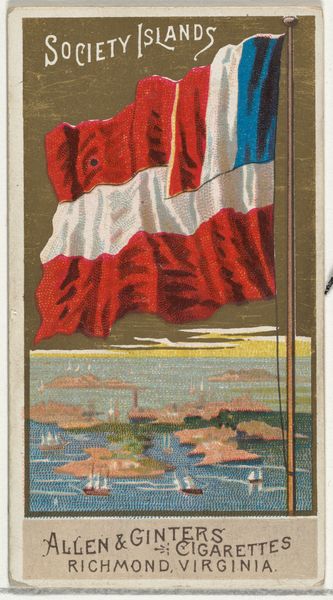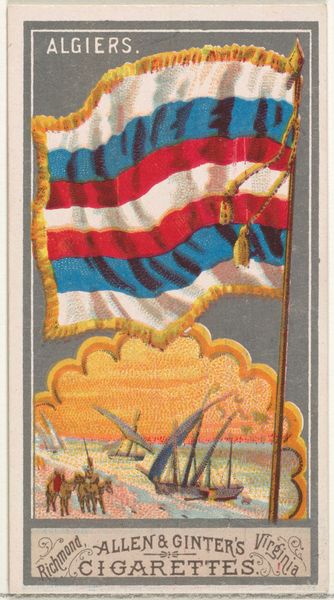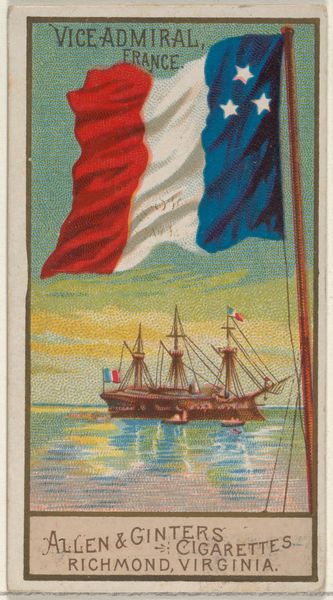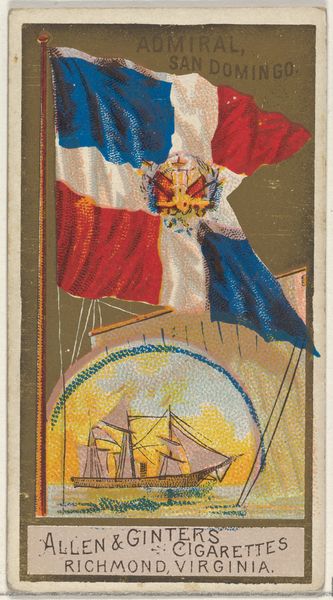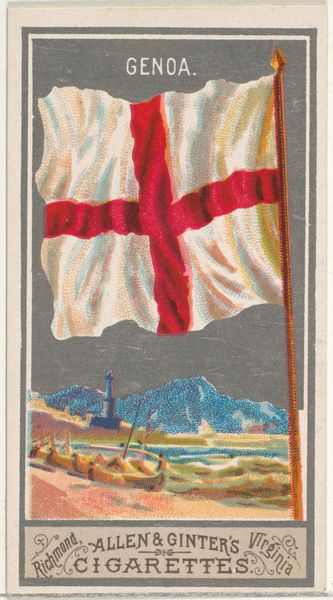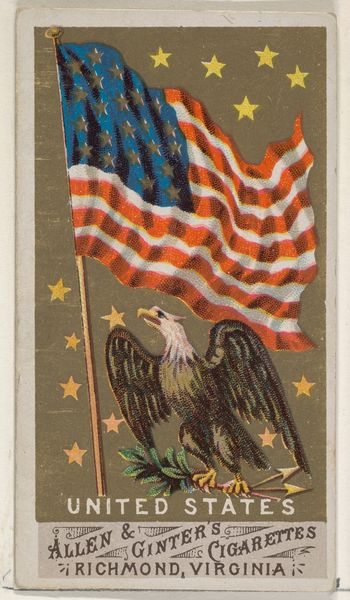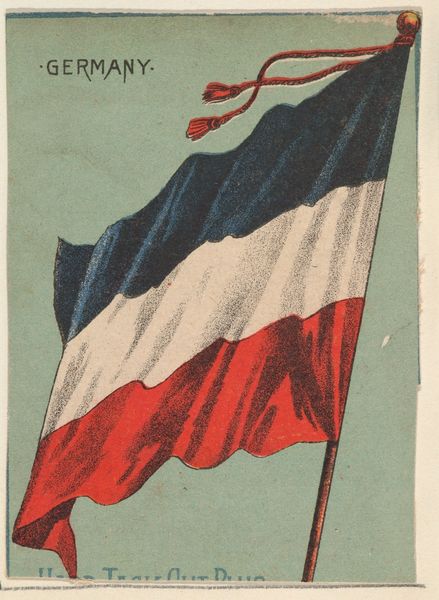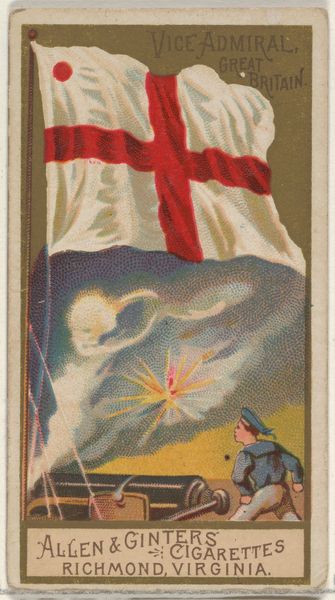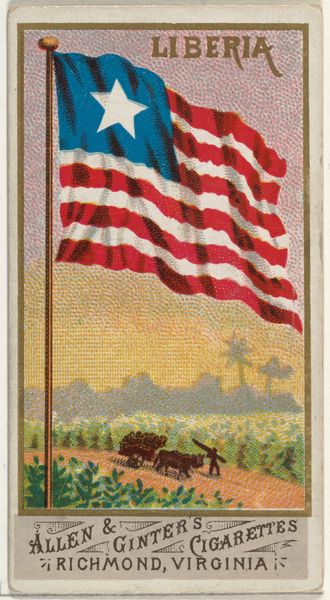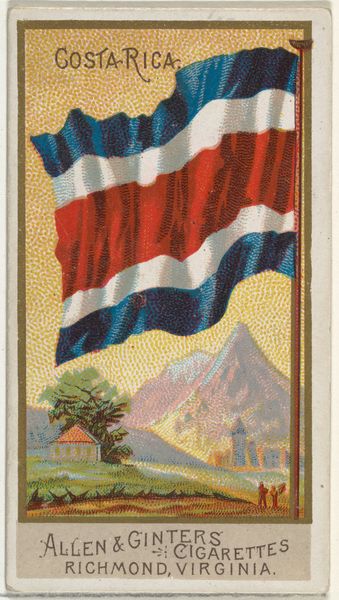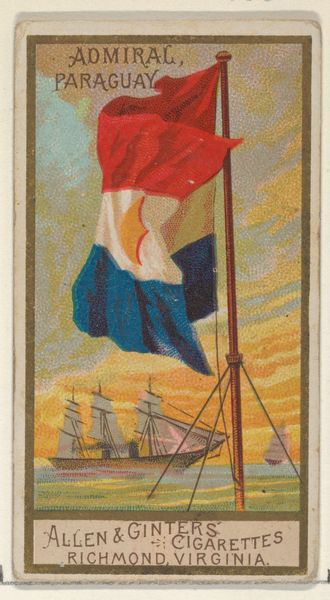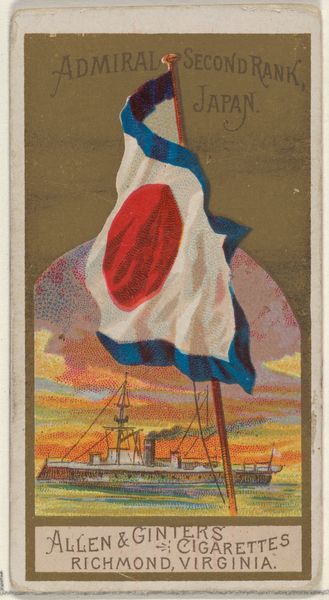
Valparaiso, from the City Flags series (N6) for Allen & Ginter Cigarettes Brands 1887
0:00
0:00
drawing, coloured-pencil, print
#
drawing
#
coloured-pencil
#
water colours
#
narrative-art
# print
#
impressionism
#
coloured pencil
#
cityscape
Dimensions: Sheet: 2 3/4 x 1 1/2 in. (7 x 3.8 cm)
Copyright: Public Domain
Editor: What a striking image—at first glance, I'm drawn to the way the bright red tile roofs contrast with the muted tones of the landscape. Curator: That's certainly eye-catching. This is a trading card titled "Valparaiso, from the City Flags series (N6)", crafted around 1887 by Allen & Ginter. The card is made of a lithograph printed with colored pencil and drawing, and it depicts both the Chilean flag and a birds-eye view of the port city in Valparaíso. It was issued as an insert in cigarette packs, one of a series designed to promote the brand. Editor: So interesting to see this elevated from a mere promotional item. The use of lithography for mass production, and how colored pencil creates detail despite its small size really showcases material and manufacturing techniques. We're literally consuming an image of a place along with tobacco. Curator: Precisely. And the flags themselves. City flags represent identity, community, belonging. To see it positioned above the city... almost looming. Think about the colonial power structures in play in late 19th-century global trade when the artwork was created. Who benefits, who labors? Editor: Right. The image, presented as a collectable, sanitizes the gritty reality of colonial exploitation for consumption. Those warm colors obscure any economic exploitation with their apparent idyllic beauty. Curator: Cigarette cards acted as tiny vehicles of imperialist ideology, packaging and disseminating images that both entice and subtly reinforce the status quo. We can even interpret the series itself to the spread of global capitalism via commodities like tobacco. Editor: Knowing the context makes it less picturesque and more politically charged. We have to ask what Valparaiso meant in terms of the history of economic exchanges, power relations, and cultural diffusion—not merely as a scenic location. Curator: Absolutely. These historical fragments challenge the supposed autonomy of art, grounding it in real-world social relations. They help to create narratives of how power is distributed through things we might usually ignore. Editor: It truly provides a more complete experience by bringing the labor and conditions of its manufacture into focus, wouldn't you say? Curator: Without a doubt. Understanding the art demands an understanding of material production and distribution and its wider historical context, even at this intimate scale.
Comments
No comments
Be the first to comment and join the conversation on the ultimate creative platform.
